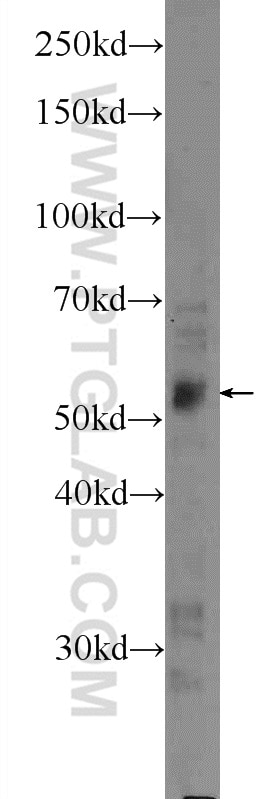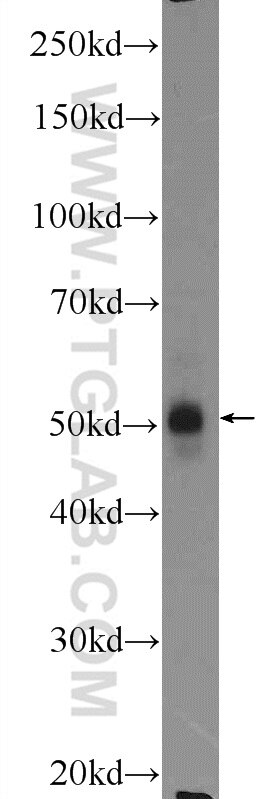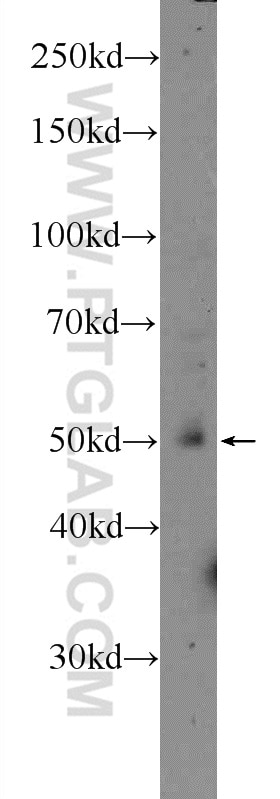Anticorps Polyclonal de lapin anti-LPL
LPL Polyclonal Antibody for WB, ELISA
Hôte / Isotype
Lapin / IgG
Réactivité testée
Humain, rat, souris
Applications
WB, ELISA
Conjugaison
Non conjugué
N° de cat : 16899-1-AP
Synonymes
Galerie de données de validation
Applications testées
| Résultats positifs en WB | cellules MCF-7, cellules HeLa, tissu de muscle squelettique de souris |
Dilution recommandée
| Application | Dilution |
|---|---|
| Western Blot (WB) | WB : 1:200-1:1000 |
| It is recommended that this reagent should be titrated in each testing system to obtain optimal results. | |
| Sample-dependent, check data in validation data gallery | |
Applications publiées
| WB | See 2 publications below |
Informations sur le produit
16899-1-AP cible LPL dans les applications de WB, ELISA et montre une réactivité avec des échantillons Humain, rat, souris
| Réactivité | Humain, rat, souris |
| Réactivité citée | souris |
| Hôte / Isotype | Lapin / IgG |
| Clonalité | Polyclonal |
| Type | Anticorps |
| Immunogène | LPL Protéine recombinante Ag10431 |
| Nom complet | lipoprotein lipase |
| Masse moléculaire calculée | 475 aa, 53 kDa |
| Poids moléculaire observé | 53 kDa |
| Numéro d’acquisition GenBank | BC011353 |
| Symbole du gène | LPL |
| Identification du gène (NCBI) | 4023 |
| Conjugaison | Non conjugué |
| Forme | Liquide |
| Méthode de purification | Purification par affinité contre l'antigène |
| Tampon de stockage | PBS with 0.02% sodium azide and 50% glycerol |
| Conditions de stockage | Stocker à -20°C. Stable pendant un an après l'expédition. L'aliquotage n'est pas nécessaire pour le stockage à -20oC Les 20ul contiennent 0,1% de BSA. |
Informations générales
LPL(lipoprotein lipase) is also named as LIPD and belongs to the AB hydrolase superfamily. LPL catalyses the hydrolysis of the triacylglycerol component of circulating chylomicrons and very low density lipoproteins. It plays a role in the binding of lipoprotein particles to cell-surface molecules, including sulfated glycosaminoglycans (GAGs)(PMID:21177248). The gene encodes a protein of 475 amino acids that becomes a mature protein of 448 residues after cleavage of a signal peptide. This protein is highly glycosylated and functions as a head-to-tail dimer under well-defined conditions(PMID:11154699).
Publications
| Species | Application | Title |
|---|---|---|
Diabetes Rab8a Deficiency in Skeletal Muscle Causes Hyperlipidemia and Hepatosteatosis Via Impairment of Muscle Lipid Uptake and Storage. | ||
Diabetes Tissue-specific splicing and dietary interaction of a mutant As160 allele determine muscle metabolic fitness in rodents. | ||
Biology (Basel) Curcumin-Rich Diet Mitigates Non-Alcoholic Fatty Liver Disease (NAFLD) by Attenuating Fat Accumulation and Improving Insulin Sensitivity in Aged Female Mice under Nutritional Stress |




